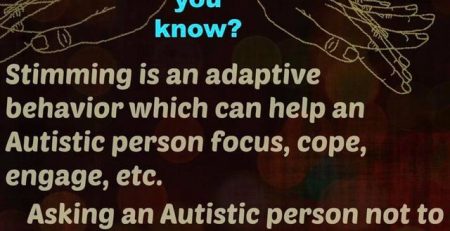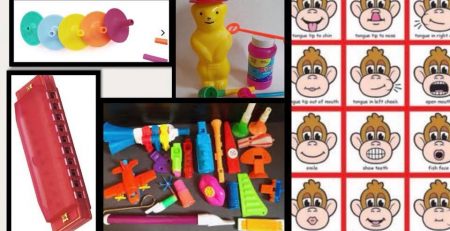Shine Avi Learning Centre
*Teaching the Child to Understand and Use Abstract Language*Some children with Autism are able to learn to ask for (mand), identify (receptive) and label (tact) concrete objects and actions with relative ease but show a great deal more difficulty learning other parts of speech that may be considered more “abstract” in nature such as adjectives, adverbs, prepositions and pronouns. There are many theories as to why these “parts of speech” are more difficult for children with Autism to learn but it is due to the fact that these words are “relational” or “relative”. In other words, the words used change depending on what is being compared, the perspective of the speaker or who is speaking to whom. For example, when seen next to a bush, a tree is considered, “bigger” but when compared to a skyscraper, the same tree would be considered, “smaller”. A ball laying, “on” the floor may also be “beside” a chair but depending on where the observer is located, “beside” might look very different! If I am talking to a female, I call her “you” but if I am telling someone else something about that same person, I call her “she”. It’s easy to see how the children can get confused! In behavioral terms, it is more difficult to obtain stimulus control when the stimulus is constantly changing!As with other parts of speech you can have most success when using the child’s motivation or desire (establishing operation/EO) to teach them to request (mand) for something using these parts of speech. Once the child is using these words to request (mand) with no prompting, the child can be taught to receptively identify and label (tact) using these words with much greater ease through the use of transfer procedures. Let’s look at each part of speech to determine how we might manipulate the child’s need to request using these “abstract words”. It is important to remember that the questions used to elicit the response as well as the object(s) of reference are all part of the stimulus conditions which specify which response will be reinforced.*Using Pronouns*Pronouns are also very difficult for children with Autism because the term used depends on who is speaking to whom as well as the presence or “knowledge” the listener has of the referent! In addition, many children with Autism like to have one name for every one thing so the fact that “mommy” can also be called “she”, “her” and “you” can be quite frustrating! Also, pronouns are often difficult to teach because if we want to prompt the child to respond the way he is supposed to, we often have to reverse the pronoun. For example, if we’re teaching the child to respond to “Whose nose?” By saying “my nose” when we prompt him, we must say “my nose” even though this is what we would use to refer to our own nose! The tendency for many people is to reinforce the child who responds correctly with “my nose” by saying, “That’s right! It’s your nose!” which further adds to the confusion!Finally, when teaching a child to use pronouns, we have to be sure to teach them to use them correctly both as “tact” (labeling in the presence of a person) and “intraverbal” (using the pronouns to talk about things not present) and to use additional “communicative behaviors” such as pointing to clarify the referent. Consider the child who might walk up to a teacher in a classroom of children and say, “She took my ball.” The child is present in the room but the teacher has no idea who “she” is! It is important to teach the child to point or at least look at the person to whom he is referring when giving a tact response.As another example, consider the child who comes home and his mother asks, “What did you do at school today?” The child responds, “I built a castle with him.” The mother has no idea who “Him” refers to. It is important to teach the child to use the name of the person he is referring to “establish the referent” before using pronouns in as an intraverbal response.One of the mistake that often occur as a result of the difficulty inherent in teaching children with Autism to use pronouns is the avoidance of their use at all! Instead, people will use the actual name of themselves and/or the child instead of the appropriate pronouns. For example, a parent might prompt, “Kevin wants to go outside.” Of course, after years of being reinforced for saying “Kevin wants to go outside.”, it will be very difficult to teach the child to use “I” correctly when referring to himself. Or, when looking through a photo album, parents may teach the child to respond with his name when asked, “Whose that?” while looking at a picture of the child. The response elicited should be “me” not the child’s name in this context it is suggested that pronouns such as “he, she, it, him, her etc.” not be used in early language training but that it is important to start teaching children to refer to himself as “I” and “me” from the very beginning to avoid having to “fight against” our own teaching later on.I/MeThe first pronouns many children learn are “I” and “me”. These are typically taught through the mand (request) when the child begins requesting with “I want..”. Me can be taught when the child is requesting an action. For example, when the child requests “push” ask, “Who should I push?” and prompt him to respond, “me”. Be sure to have other people or dolls available to push also so the child doesn’t begin to chain “push me” into a single request for “push”. Once fluent as requests (mands) these pronouns can be transferred to tacts (labels) quite easily by asking “Who am I pushing?” and prompting “me” or Who wants some juice?” and prompting “I do” or “me”.My/MineThe easiest pronouns to teach next are typically “my” or “mine” First teach these responses as a request (mand) to keep an item that someone is trying to take from them. For example, while gently trying to take a toy truck, prompt the child to say “my truck” and pulling the truck away (just like most young children!) it is important to teach the child to “defend their things” this way, especially if they are in a daycare or preschool environment. It’s much better than hitting or passively letting another child take toys away! Once the child is responding when you try to take the truck, ask, “Whose truck?”. The child will most likely respond, “my truck” as a tact (label) response because he just said it. Be silly! Try to put the child’s shoe on as you get ready to go out and give him your shoes to put on to prompt him to mand, “My shoe!”. Mine can be taught in a similar way. The child is just taught the word “mine” rather than the combination of “my” and the object.My/yourPlz do not begin teaching “my” and “your” by giving receptive instructions. Typically, we suggest teaching both receptive (point to/touch) and labeling (tact) responses at the same time. This is because the child will often label (tact) the item/action while he is receptively identifying. In order to transfer from a receptive response, the label (tact) has to be included as the child is pointing. Remember, we are transferring the CHILD’S behavior to a new condition which is not possible in the case of the pronouns “my” and “your”. Instead, this task would require a reversal of the pronouns. For example, one of the early objectives in the ABLLS includes teaching the child to identify body parts on themselves and others. Many use the SDs “touch my nose” and “touch your nose” to teach this skill. However, if asked, “Touch my nose” and the child responds by touching and saying “my nose”, this would be an inappropriate use of the pronoun and could not be transferred to the tact of “Whose nose?”. Instead, the suggestion is having the child tact the body parts of dolls, animals pictures of people etc. and that the tact target to transfer to should include the possessive tact of the item and/or teaching the tact of the possessor/possession combinations. Wait to teach the pronouns after the child has mastered many other skills.Instructor ChildEx: Touch the dog’s nose touches and says, “dog’s nose”Right! This nose is the dog’sWhose nose? Dog’sTell me about this. Dog’s noseLater, when the child is ready to begin learning pronoun’s the same activity can be used to teach other possessive pronouns such as “his”, “her” and “its” which do not require pronoun reversals.Other teaching procedures used for teaching possessive “my” and “your” can include the use of contingent comments. With contingent comments, the child is taught to label (tact) something in the environment by following the “model” of the instructor but not echoing directly. This is often a successful way to teaching children with Autism since they have a tendency to imitate (echoic/duplic).Ex: Instructor: My light is yellow. (Point to child’s light and give phonemic prompt mm)Child: My light is blue. Then give the SD, “Tell me about this light.” While pointing to the child’s light. Child: My light is blue. Next, present “Tell me about this light.” With full prompting of “Your light is yellow.” Child: “Your light is yellow.” Continue until the child is able to describe each item using the correct pronoun referents. The use of “Tell me about” as the SD reduces the effects of the pronoun reversal.”My” and “your” can also be easily taught when playing games. Teach the child to tact whose turn it is. Start by having both the instructor and the child saying, “My turn” at the appropriate times but only ask, “Whose turn?” after the child has already said, “My turn.” After this is mastered, begin saying, “your turn” each time the instructor has already taken a turn and prompt the child to do the same. Once the child is consistently saying, “your turn” with no prompting, transfer to the tact by asking, “Whose turn?’ following his initial response. Finally, one both are mastered, begin mixing the two.At some point, the child does need to learn to reverse pronouns but this should only be conducted after many other pronouns have been mastered. Just teach one of the pronouns at a time. When teaching, it will be important to provide full echoic prompts before the child responds. For example, tell the child to “touch your knees” then ask, “Whose knees?” and prompt, “mine”. Wait for the child to imitate you then ask the question again to get an unprompted response. Once the child is responding with “mine” consistently with no prompting, introduce “your”. Ex: Touch my nose. R= child touches Whose nose? Say, yours. Child: yoursFor some children, it is easiest to wait until you’ve taught the child to mand (request) information using “Whose?” and “Who?” then teach the pronouns in conjunction with these requests. For example, put a piece of the child’s favorite candy on the floor and prompt him to ask, “Whose candy?” tell him “It’s yours!” or “It’s your candy!” I guarantee he’ll learn the meaning of “your” quickly! Then, start asking him, “Whose candy is it? after you’ve responded to his question and prompt him to answer, “mine”. Every now and then, when he asks, “Whose candy?” say, “It’s my candy.” and take the candy or ask him to give it to you. (Be careful! It may be tempting!) Ask, “Whose candy?” and prompt him to respond, “Yours”. Of course, if the child does not like candy, any reinforcing item can be used.His/Her/Its/OurThese are also possessive pronouns and the advantage of teaching them is that they often do not require reversals between the instructor and the child. These are pronouns used to label (tact) or intraverbally respond to states of ownership. As described above, these pronouns can be taught with body parts. It is suggested that if using this teaching procedure, the child is also taught to point to the referent.Ex: (a picture of a boy, girl, and dog are present)Instructor ChildTouch his shirt. (0 second delay prompt) touches boy’s shirtTouch his shirt. (fade prompt) touches boy’s shirtThat shirt is hisWhose shirt? HisContinue with other possessive pronouns for the girl (her) and dog (its collar)Possessive pronouns can also be taught in conjunction with subjective pronouns.Ex: (pictures of people performing various actions with objects)Instructor ChildFind, “He’s playing his guitar.” Points and says, “He’s playing his guitar”What’s happening? He’s playing his guitarFind, She’s playing her guitar. Points and says, “She’s playing her guitar”What’s happening? She’s playing her guitarPlural pronouns can also be taught in a similar manner by having 2 or more people be the “owner’s of the object. For example, ‘We’re washing our car,” or “They’re cleaning their house.” Single and plural pronouns should also be taught in a mixed fashion so the child can respond in a flexible manner. (Ex: They’re playing with her dog. She’s cleaning their house.)I/He/She/You/We/They/UsThese are “subjective” pronouns. In other words, they are used to refer to the subject of a sentence tacting (labeling) an item that is seen or can be used intraverbally as long as the “referent” or person you are talking about has already been established.If the child has a favorite toy, tell him you really want to play with it but someone else has it then prompt him to ask, “Who?” Both a male and a female should be present. Initially prompt with a point in addition to telling him “He/she” has the toy but fade the pointing prompt. Once the child is easily finding the correct person based on the pronoun you’ve given, transfer to the tact (label) by asking, “Who has the toy?” Be sure the child is “talking and pointing” as part of his response when first teaching. Also, be sure the child is talking “to” the instructor as the pronoun changes to “you” if he is talking to one of the people holding the toy. Once the child has mastered “He/She”, give the item to various different people and prompt the child to respond correctly depending on to whom he is speaking as well as who has the toy.Ex: (a male, female and the child are present and a favorite toy (light) is passed around)Instructor Child(Gives the toy to a male) Tell me. Who has the light? Child points at male but looks at instructor and says “He does”Tell him. “You have the light”(Gives child the light) Who has the light? I do(Gives female the light) Who has the light points to female, looks at instructor “She does”Tell her. You have the light(Note that the child is prompted to give a full sentence in response to “Tell” rather than just answering the questions with a phrase. This is to avoid inadvertently teaching the child to relay messages by saying,”You do” or “He does”.Another way to teach subjective pronouns is to teach the child to point to pictures of males, females animals is to start with a receptive response and concurrently teach the labeling (tact) response. Be sure to teach in combinations with all other parts of speech (verbs, adjectives etc.) to be sure the responses generalize to a variety of different sentence forms.Ex: (a variety of different males and females of different occupations. Child has already been taught the phrase responses through FFC and reversal transfers)Instructor ChildTouch, “He puts out fires.” Touches male firefighter and says, “He puts out fires.”Tell me about the firefighter. (points and says) He puts out fires.Touch, “She has a hose.” Touches female firefighter and says, “She has a hose”Tell me about the firefighter. (points and says) She has a hose.Find, “She has a yellow hat.” Touches and says, “She has a yellow hat.”Tell me about the firefighter (points and says), “She has a yellow hat.”Once the child is responding correctly, begin fading your receptive prompts and just say, “Tell me about this firefighter”. The child may give multiple different responses but be sure he uses the correct pronoun.To teach plural pronouns, tell the child that some people are going to his favorite place (park) and prompt him to ask, “Who?” Respond, “We are! Get your shoes on!” Transfer to the tact (label) by asking, “Who is going to the park?” and prompting, “We are.” Once you get to the park, look around for other children playing on different equipment and ask, “Who’s playing on the swing?” prompting “We are.” then, “Who’s playing on the slide?” prompting, “They are.” Transfer to “Tell me what’s happening?” so the child will give the full sentences, “We are (we’re) playing on the swing.”; and “They are (they’re) playing on the slide.” (Note: There are pros and cons for teaching children to use contractions before they learn to use auxiliary verbs with correct subject-verb agreement. The author prefers to focus on teaching functional communication that matches what is typically heard in the environment rather than focusing on “correct grammar”)Another teaching strategy is to let the child “boss” (mand) for different people to perform actions then teach the tacts using the appropriate pronouns in the context of the reinforcing activity.Ex: A variety of males and females present. Child is the “boss”. The instructor has previously taken a turn being the boss to model manding for 2 or more people to perform an action.Child InstructorMommy and daddy jump. Who’s jumping?(Looks at instructor, points to parents) They are. Tell Kate (another person present)They’re jumping. Tell mommy and daddy.You’re jumping Let’s you and I jump!(jumps with instructor) Who’s jumping?We are. Tell mommyWe’re jumpingPronouns can also be taught by teaching the child to make “contingent comments”. In other words, begin teaching the child to tact (label) aspects of the environment in a fashion similar but not exactly the way you do. For example, while coloring, you might start with easy tacts such as, “My crayon is red” then point to his crayon prompting him to say, “My crayon is blue”. Vary this by saying, “I have a big ball.” and prompting him to say, “I have a little ball.” When he’s responding to these with no prompting, begin adding other pronouns such as, “She has a red shirt.” or “He’s holding his dog.” and point to a different picture for him to tact. Start by pointing to the same sex to avoid confusion but you can mix up the sexes once the child is responding consistently with no prompts needed. Also, fade your pointing prompt so the child is choosing which item he wants to tact (label/describe).Him/her/them/usThese are “objective pronouns” or pronouns that refer to the object of the sentence. Typically developing children often have difficulty discriminating the appropriate use of these pronouns and given the way they are typically used, it is easy to see why. Consider that we typically model the use of these pronouns by giving the child directions. Ex: give the ball to him. If we’d used a person’s name rather than the pronoun, the last word would become the subject of the tact response. Ex: Give the ball to Sarah. R= gives the ball to Sarah. Inst: Who has the ball? R= Sarah has the ball. Therefore, it would be perfectly reasonable and logical to assume the response to “Who has the ball?” after being asked to “give the ball to him” would be “Him has the ball” Right?!To avoid this confusion, the author prefers to teach the child to use objective pronouns after teaching subjective pronouns and to include the subjective pronouns in initial teaching to help teach the discrimination of the appropriate use.Ex: (pictures of males and females giving things to other people)Instructor ChildShow me “He gave the ball to her.” Points and says “He gave the ball to her.”What happened He gave the ball to her.Who gave the ball? He did.Who did he give the ball to? HerOr, in a game type format, have the child mand for an action along with other people manding for the same action. Vary the people requesting the action and performing the actions so that all forms of the pronouns can be taught. Also vary the people to whom the child speaks to teach him to discriminate the pronoun usage depending on to whom he is talking.Example: Multiple males and females present playing catch.Child InstructorThrow the ball to me. Who threw the ball?He did. Who did he throw to?Me Tell me what happened.He threw the ball to me. Throw the ball to me.Throws Tell me what happened.I threw the ball to you. Tell daddy what happened.I threw the ball to her. (female is the “thrower)Throw the ball to me. What happened?She threw the ball to me. Tell her.You threw the ball to me.Plural objective pronouns can be taught in the same manner or by having “teams”. (It’s our turn. Throw it to us. We threw the ball to them.)Finally, make sure the child is discriminating all of the conditions under which it is and is not appropriate to use pronouns. Take the child out in the hallway with one other person, away from other people and have one person perform an action. Ask the child if daddy (who’s waiting in the room) can see what happened. When the child responds, “no” remind him that he daddy needs to know who performed the action. Prepare dad to ask, “What happened?” when the group re-enters the room. The child should respond by either giving the person’s name (i.e. Mommy sang a song.) or pointing while relaying, “She sang a song.”









Leave a Reply